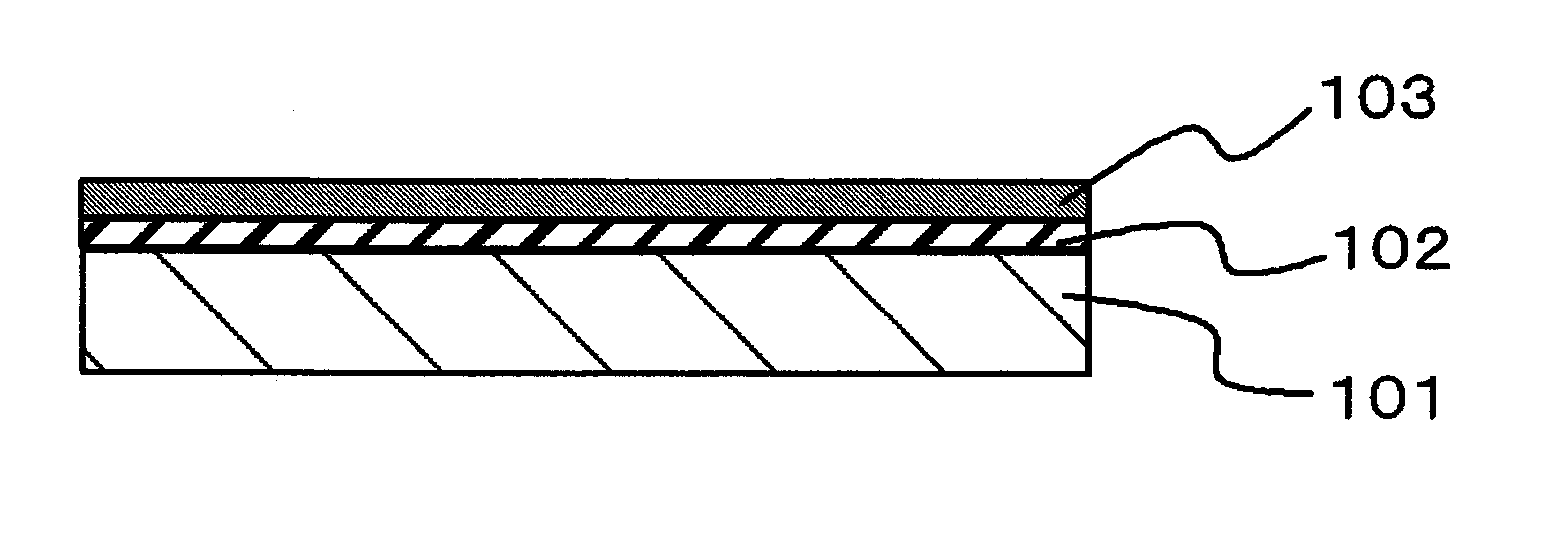Method of manufacturing semiconductor device
a manufacturing method and technology of semiconductors, applied in the direction of semiconductor devices, basic electric elements, electrical equipment, etc., can solve the problems of abnormal electrical discharge in the initial stage of film deposition, increase in power consumption, and deterioration of the thickness uniformity of the entire insulating film, so as to reduce detachment and the like, without deteriorating the reliability of the device, and achieve the effect of reducing the number of detachable parts
- Summary
- Abstract
- Description
- Claims
- Application Information
AI Technical Summary
Benefits of technology
Problems solved by technology
Method used
Image
Examples
first embodiment
[0041]FIGS. 1A to 1C are diagrams for explaining a method of manufacturing a semiconductor device according to an embodiment. FIGS. 1A to 1C are simplified diagrams for the purpose of clearly explaining the invention, that is, the relationship between an underlying film 101, a first insulating film 102, and a second insulating film 103, and an interconnection layer (not shown), a barrier film (not shown), a cap film (not shown) and the like existing in an actual semiconductor manufacturing process. The embodiment includes forming the first insulating film 102 on the underlying film 101 by plasma polymerization of cyclic siloxane (FIG. 1B), and forming the second insulating film 103 on the first insulating film 102 by plasma polymerization of cyclic siloxane continuously after forming the first insulating film 102 (FIG. 1C). Here, the term “continuously” includes performing continuously to form the second insulating film 103 while a vacuum state is maintained after forming the first ...
second embodiment
[0067]The embodiment is also a method of manufacturing the semiconductor device. In the embodiment, only the points which are different from those of the first embodiment will be described, and identical contents will not be repeated. Even in the embodiment, as shown in FIGS. 1A to 1C, the first insulating film 102 is formed on the underlying film 101 by plasma polymerization of the cyclic siloxane, and the second insulating film 103 is continuously formed on the first insulating film 102 by plasma polymerization of the cyclic siloxane. In this manner, a laminated structure of the first insulating film and the second insulating film is formed. In the first embodiment, the film deposition rate is controlled by the RF power. However, in the embodiment, the ratio (a2 / (b2+c2)) of the gas flow rate (a2) of the cyclic siloxane to the sum (b2+c2) of the flow rate (b2) of the carrier gas and the flow rate (c2) of the excitation gas at forming the second insulating film 103 (FIG. 1C) is set ...
third embodiment
[0074]In the embodiment, only the points different from those of the first and second embodiments will be described, and identical contents will not be repeated. In the embodiment, when any of the first insulating film 102 and the second insulating film 103 is / are formed, an oxidized gas is supplied to the chamber 201 shown in FIG. 2 together with organosiloxane. In the embodiment, the carrier gas and the excitation gas can be used together with the cyclic siloxane gas and the oxidized gas. Oxygen (O2), carbon dioxide (CO2), nitrogen monoxide (N2O) and nitrogen dioxide (NO2) and the like can be used in the oxidized gas.
[0075]The film deposition rate can be improved by addition of the oxidized gas as shown in FIG. 15. Thereby, merits of the improvement in throughput and the reduction in the amount of the precursors used are generated, and thus an additional effect of the reduction in price can be expected.
[0076]The manufacturing method according to the embodiment is shown by a timing...
PUM
 Login to View More
Login to View More Abstract
Description
Claims
Application Information
 Login to View More
Login to View More - R&D
- Intellectual Property
- Life Sciences
- Materials
- Tech Scout
- Unparalleled Data Quality
- Higher Quality Content
- 60% Fewer Hallucinations
Browse by: Latest US Patents, China's latest patents, Technical Efficacy Thesaurus, Application Domain, Technology Topic, Popular Technical Reports.
© 2025 PatSnap. All rights reserved.Legal|Privacy policy|Modern Slavery Act Transparency Statement|Sitemap|About US| Contact US: help@patsnap.com



